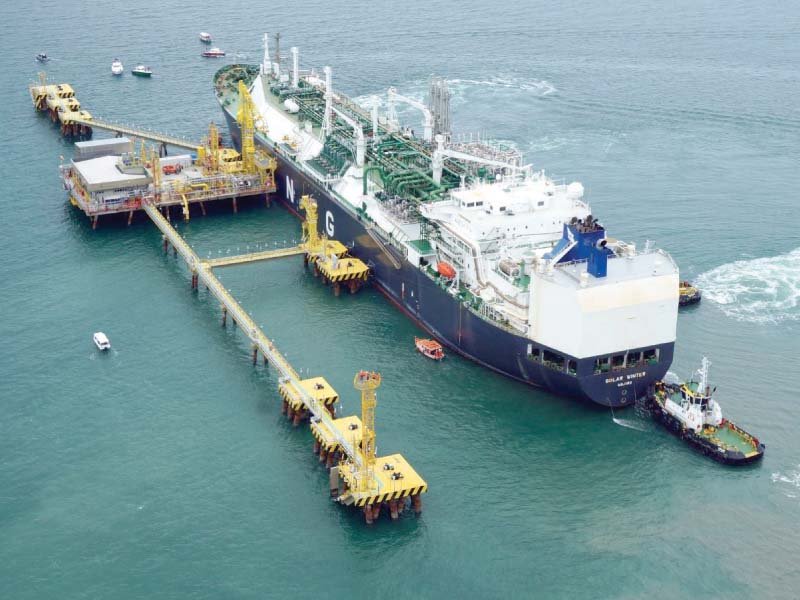
Pakistan has two LNG terminals with import handling capacity of 1.2 billion cubic feet per day (bcfd). The government has LNG supply contracts for 800 million cubic feet per day (mmcfd), which includes 500mmcfd from Qatar, 200mmcfd from Gunvor and 100mmcfd from Eni. The remaining supplies are brought through spot contracts.
The LNG terminals have been set up on a take-or-pay basis, which means the government would have to pay capacity charges even if the terminals are not operated at full capacity. The previous government had also set up three LNG-based power plants with a take-or-pay clause.
Sources told The Express Tribune that the power sector was not ready to lift LNG because of it being expensive and lower on the economic merit order. According to Power Division officials, LNG becomes feasible when power generation crosses 12,000 megawatts. In the winter season, the electricity demand remains low and therefore LNG-based power plants stay closed for most of the time and LNG is diverted to domestic consumers.
Sources said the government had to cut LNG supplies at the end of February when the power sector refused to lift gas as per demand.
“We were afraid of gas pipelines that may rupture due to high pressure as customers were not ready to lift gas,” officials said, adding that over 700mmcfd of LNG was being supplied, which was slashed to 550mmcfd on February 25. The power sector lifted only 147mmcfd.
Owing to the signing of LNG agreements at a higher price during the Pakistan Muslim Legaue-Nawaz (PML-N)’s government, consumers were not only paying capacity charges worth millions of dollars to the LNG terminals but were also paying such charges to the LNG-based power plants, which had remained shut.
Only the general industry was taking supplies in bulk at 245mmcfd as it was getting gas at discounted rates.
Officials said the public gas utilities had the capacity to supply 1.2bcfd of LNG but had been on the verge of overloading the pipelines at 700mmcfd due to the reluctance of customers to lift supplies.
In December last year, Sui Northern Gas Pipelines Limited (SNGPL) supplied 1,847mmcfd of gas, which included 925mmcfd of domestically produced gas and the remaining was LNG. Due to the increase in demand, RLNG was added to the system.
Meanwhile, average consumption of the domestic sector in April-November 2019 was 448mmcfd whereas the consumption increased substantially in December 2019, which was managed through the diversion of RLNG.
There is no mechanism for the recovery of RLNG price from domestic consumers as its price is Rs1,600 per million British thermal units (mmbtu) and it is being supplied to the consumers at Rs350 per unit.
There is a need to devise a mechanism for the recovery of RLNG prices but there is no weighted average cost of gas because of the Ogra Act, officials said.
Published in The Express Tribune, March 1st, 2020.
Like Business on Facebook, follow @TribuneBiz on Twitter to stay informed and join in the conversation.

















COMMENTS
Comments are moderated and generally will be posted if they are on-topic and not abusive.
For more information, please see our Comments FAQ